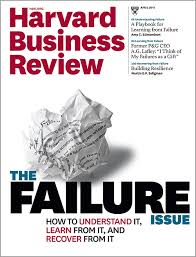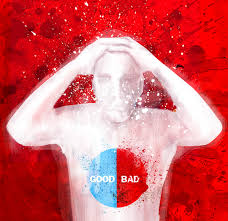Here’s a lesson from experience.
Venture capitalists sometimes make an error in directing their portfolio company CEOs to push resources to the limit and scale the business to immense size quickly, all to seize market share. The logic in this is simple: once a company has market share, other issues can be sorted out to monetize the market, make the company profitable, scoop up wavering competitors, or even sell the company to a larger firm looking for a large customer base.
push resources to the limit and scale the business to immense size quickly, all to seize market share. The logic in this is simple: once a company has market share, other issues can be sorted out to monetize the market, make the company profitable, scoop up wavering competitors, or even sell the company to a larger firm looking for a large customer base.
And it’s a contemporary problem.
This form of thinking has been unusually true during the current rise of social media platforms, where market share became the primary goal of a company, with revenues and profitability to follow later. It was true for Amazon and other visionary companies that grabbed market share during the early Internet era.
But beware.
Many, many companies accepting venture capital lost it all following this instruction. VCs have a goal of creating extraordinary value for their investors. Incremental profits from companies that later sell for three to five times their original value at the time of their investment may be considered great successes for founders but relative failures for VCs, who must hit for the fences with every early-stage investment.
Why it’s so personal to me…
[Email readers, continue here…] I’ve been involved as a board member of two such businesses, where venture investors came aboard and pushed management to immediately scale the business without regard for profitability, and without much regard for infrastructure. Both businesses scaled beyond what their market could absorb, and revenues did not build at nearly the rate of audience increase. The cost of each exercise was dramatic, far beyond what a founder-entrepreneur would order to be spent when using their capital or reinvesting cash flow from operations. Venture investors need large scale to make large exit valuations, or in many cases are not interested in maintaining marginal companies. To state it again: what might be a success to angel investors and to founders could be only of marginal interest to a typical VC.
Scaling a business is an art as well as a science.

Scaling requires the addition of fixed overhead, sometimes the kind you cannot shed easily, including leases for expanded space. Experienced CEOs often make it a habit to scale because of demand, reducing risk and mating cost to growth in revenues.
Angel investors are more tolerant of this than VCs. Typically, when you bring a VC onboard, you increase the risk, the reward, and the definition of the size for a successful exit. Adding to this is the extra risk undertaken by premature scaling. It is important for you to realize that there is a fair tradeoff in valuation between a company with less outside investment and a lower endgame sales price, and one that shoots for a much higher valuation to justify a higher amount of outside investment.

 greatly reduced. To make the point, Harvard’s Robert Kaplan believes that less than 10% of corporate strategies are effectively executed. Ouch!
greatly reduced. To make the point, Harvard’s Robert Kaplan believes that less than 10% of corporate strategies are effectively executed. Ouch! If a plan has realistic goals and if you are reasonably able to provide the resources necessary to complete the plan successfully, you are way ahead of that other 90% estimated by Harvard’s Professor Kaplan..
If a plan has realistic goals and if you are reasonably able to provide the resources necessary to complete the plan successfully, you are way ahead of that other 90% estimated by Harvard’s Professor Kaplan.. business… There are big fish and small fish, potential customers, all swimming in the sea that is your potential marketplace. You, the lonely fisherman, must weave a net to catch your fish. Should your net be large and bulky, requiring more effort and expense to weave? Or should it be small and delicate, to catch those fish that would otherwise fall through the net?
business… There are big fish and small fish, potential customers, all swimming in the sea that is your potential marketplace. You, the lonely fisherman, must weave a net to catch your fish. Should your net be large and bulky, requiring more effort and expense to weave? Or should it be small and delicate, to catch those fish that would otherwise fall through the net? When we investors look at a business plan, we look immediately to see if there is research to support the claim of a large enough SOM market to expect the candidate company to grow into the size projected. And we look to see if the size projected is large enough to interest us as investors, since that is directly proportional to the ultimate value of the company in a liquidity event.
When we investors look at a business plan, we look immediately to see if there is research to support the claim of a large enough SOM market to expect the candidate company to grow into the size projected. And we look to see if the size projected is large enough to interest us as investors, since that is directly proportional to the ultimate value of the company in a liquidity event. by the competition, both regionally and for the same job classification. But more difficult is the sticky issue of employee incentive compensation. I’ve found that this is an area much more often the subject of a CEO phone call, a roundtable discussion, or a board compensation committee meeting.
by the competition, both regionally and for the same job classification. But more difficult is the sticky issue of employee incentive compensation. I’ve found that this is an area much more often the subject of a CEO phone call, a roundtable discussion, or a board compensation committee meeting. A sales commission plan should reward a salesperson with a combination of salary and commission up to the expected level of performance, often called a quota. Perhaps a part of that compensation plan should include a bonus upon achievement of quota, as a form of recognition and celebration. Then, contrary to popular thinking, there should be an increasing reward for achievement above the expected number, beyond the list of agreed-upon incentives for non-commissioned employees.
A sales commission plan should reward a salesperson with a combination of salary and commission up to the expected level of performance, often called a quota. Perhaps a part of that compensation plan should include a bonus upon achievement of quota, as a form of recognition and celebration. Then, contrary to popular thinking, there should be an increasing reward for achievement above the expected number, beyond the list of agreed-upon incentives for non-commissioned employees.  Coffee, wine, quiet time, showers…
Coffee, wine, quiet time, showers…
 nagging problem – on the way to a new product? What if those failures are commonplace? Where do we draw the line? We know that Edison tried a thousand types of material before finding tungsten for the core of the light bulb. If he had been a research employee reporting to you, at what point would you have pulled the plug on the project, or become disillusioned with the person?
nagging problem – on the way to a new product? What if those failures are commonplace? Where do we draw the line? We know that Edison tried a thousand types of material before finding tungsten for the core of the light bulb. If he had been a research employee reporting to you, at what point would you have pulled the plug on the project, or become disillusioned with the person?
 Have you done it in front of your cohort? That’s a common practice in companies where there is a barrier between levels in the chain of command, or lack of communication between people who work together or even for you as a leader. That statement represents a failing at some point in the delegation or communication chain, usually by a person at the upper level of management, and should be taken as a warning that there is a problem greater than the issue handled at the moment.
Have you done it in front of your cohort? That’s a common practice in companies where there is a barrier between levels in the chain of command, or lack of communication between people who work together or even for you as a leader. That statement represents a failing at some point in the delegation or communication chain, usually by a person at the upper level of management, and should be taken as a warning that there is a problem greater than the issue handled at the moment. [Email readers, continue here…]
[Email readers, continue here…]  development and an executive of a major company, a candidate for a large sale. As the dinner progressed, the prospect executive started, and then continued to excuse himself from the table, looking paler each time. After several of these, upon his return, my CEO friend asked him if everything was OK. He responded, like most of us would, that all was OK, and that he was having a bit of trouble breathing, would probably have to leave the dinner early, and drive home.
development and an executive of a major company, a candidate for a large sale. As the dinner progressed, the prospect executive started, and then continued to excuse himself from the table, looking paler each time. After several of these, upon his return, my CEO friend asked him if everything was OK. He responded, like most of us would, that all was OK, and that he was having a bit of trouble breathing, would probably have to leave the dinner early, and drive home. Years ago, I was in the process of selling a software system worth more than $100,000 to a well-known baseball hero who owned his namesake hotel in St. Louis. (His first name was Stan, for you baseball trivia fans.) Flying on the red eye to make a morning appointment, his hotel bus driver dropped me off in the dark a few feet beyond the lighted portico. I stepped off the van into… a recently dug pit about two feet deep and broke my foot in the fall. What pain! I tried to sleep in the room they gave me and managed to make it to the 10:00 AM meeting with the very well-known sports figure and sales candidate. He saw me drag my leg into the conference room, made no comment, but asked if I would like a tour of the hotel. “Of course,” I said, ignoring the pain and dragging my foot the entire way through the tour.
Years ago, I was in the process of selling a software system worth more than $100,000 to a well-known baseball hero who owned his namesake hotel in St. Louis. (His first name was Stan, for you baseball trivia fans.) Flying on the red eye to make a morning appointment, his hotel bus driver dropped me off in the dark a few feet beyond the lighted portico. I stepped off the van into… a recently dug pit about two feet deep and broke my foot in the fall. What pain! I tried to sleep in the room they gave me and managed to make it to the 10:00 AM meeting with the very well-known sports figure and sales candidate. He saw me drag my leg into the conference room, made no comment, but asked if I would like a tour of the hotel. “Of course,” I said, ignoring the pain and dragging my foot the entire way through the tour. front of new technologies, developing the next generation of new products, and thinking “a mile above the box” is often drawn into working on projects that are incremental to the product and to the existing business. It is not uncommon to hear that they will approach you and state that their work has become more boring, and that there is no time left for creative thinking or next generation experimentation and development. That’s one scenario.
front of new technologies, developing the next generation of new products, and thinking “a mile above the box” is often drawn into working on projects that are incremental to the product and to the existing business. It is not uncommon to hear that they will approach you and state that their work has become more boring, and that there is no time left for creative thinking or next generation experimentation and development. That’s one scenario. Your best creative thinkers will leave you, looking for more challenges than you can offer. Your competitors may already be working on the next generation of product, as you remain stuck in the mud, even if focused upon serving the customer base with outstanding service and rapid feature rollout.
Your best creative thinkers will leave you, looking for more challenges than you can offer. Your competitors may already be working on the next generation of product, as you remain stuck in the mud, even if focused upon serving the customer base with outstanding service and rapid feature rollout. the top and new ideas seem to be generated daily. It is one reason not to fear the unknown when upper-level management long in place turns over, often leaving most everyone worried about the future of the company and for their own prospects.
the top and new ideas seem to be generated daily. It is one reason not to fear the unknown when upper-level management long in place turns over, often leaving most everyone worried about the future of the company and for their own prospects. Another CEO described how he drove to work each Monday morning forcing himself to think of what he would do if he were a newly hired CEO, fresh on the job that day. He surprised himself with his many fresh ideas, just with that change of perspective.
Another CEO described how he drove to work each Monday morning forcing himself to think of what he would do if he were a newly hired CEO, fresh on the job that day. He surprised himself with his many fresh ideas, just with that change of perspective.